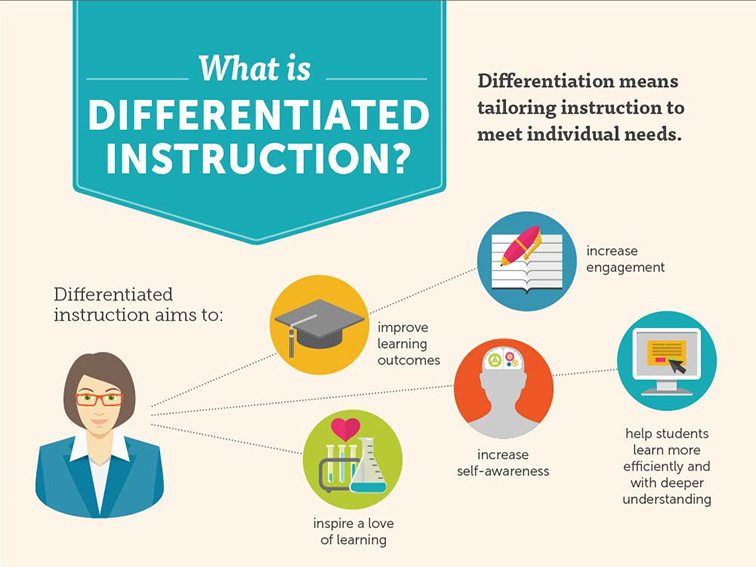Differentiated Instruction: 10 Examples & Non-Examples
contributed by Christina Yu, knewton.com
Differentiated instruction, the tailoring of educational experiences to meet individual learner needs, is nothing new.
Hardworking teachers have always recognized the diverse needs of students and adjusted their instruction to account for them. Through one-on-one coaching sessions, small group activities, individualized course packets, reading assignments, and projects, teachers are addressing a range of student levels, interests, strengths, weaknesses, and goals in their classrooms today.
Differentiated instruction is difficult and time-consuming work, however, and class sizes are increasing all the time, making individualized learning harder to achieve. New adaptive learning technology can assist teachers and augment their efforts by recommending which concepts to focus on with a learner or an entire class and by providing instructors and students themselves with information about their concept level strengths and weaknesses.
These advancements allow teachers to make the most of class time, leaving students neither overwhelmed nor bored.
5 Examples Of Differentiated Instruction
Varying sets of reading comprehension questions to answer for a given book (either chosen by the teacher or student).
A personalized course packet with individualized remediation or enrichment materials.
An adaptive assessment that gets easier or harder depending on how a student is performing.
One-on-one coaching with a student, designed around his/her specific challenges.
Students grouped into small groups, which are designed around their strengths and weaknesses so that they can tutor each other.
5 Non-Examples Of Differentiated Instruction
Assigning ‘advanced’ students to teach ‘struggling’ students.
Giving ‘advanced’ students no homework.
Grouping students into different classes based on their ability.
Letting advanced students out of class early or giving them more free play time.
Simply allowing students to choose their own books to read off of a list.

